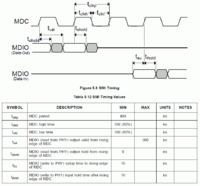moottii
Full Member level 2
Hello friends
I need to generate an 1 MHz and 100 KHz clock in ALTERA DE2-115 FPGA board. The clock must be accurate and the rising edge of both must be matched.
The board has a 50 MHz clock. I wanna ask you guys, can I use this clock to generate these clocks with a good accuracy?
And also I wanna know what is "PLL" using in FPGA boards?
Thanks in advance
I need to generate an 1 MHz and 100 KHz clock in ALTERA DE2-115 FPGA board. The clock must be accurate and the rising edge of both must be matched.
The board has a 50 MHz clock. I wanna ask you guys, can I use this clock to generate these clocks with a good accuracy?
And also I wanna know what is "PLL" using in FPGA boards?
Thanks in advance
